Will a loft conversion add value to my home?
Nationwide building society research has confirmed that on average, the right loft conversion can add 21 – 25% onto the value of your house. Adding square footage is an important factor when considering house valuation but there are many variables to consider before taking on a home improvement project of this size.
There are many reasons to add a loft conversion to a property. The amount a loft conversion adds will depend on a number of factors including:
- Your location
- Ceiling price on your road or vicinity
- Type of loft conversion you choose
- Design and quality of the loft conversion
Reasons for a loft conversion
- Additional bedroom with an en-suite for a growing family
- Birth of baby and nursery required in home
- Kid’s bedrooms with shared shower room
- Home office, home gym or studio.
- Cinema room, ‘mancave’ or child’s playroom
- Guest room or longer-term accommodation for a parent
- Older child living at home while saving for a deposit
You may also consider an extension rather than a loft conversion. All the data shows that a loft conversion will add more value to your home compared to what you spend on an extension. Let’s consider the arguments:
Loft conversion advantages
- Cheaper than an extension
- Add more value to your home per m2 and return on money spent
- Much less disruption than an extension
- No loss of garden space
- Better use of wasted space
- Loft conversions create great living spaces
- In most cases no planning permission required
- Usually no loss of space when adding stairs
- Room size will be footprint of house usually 5 metres by 6 metres.
- Can create a fantastic airy space with a variety of uses
- Can add an extra bedroom and an en-suite bathroom
- Storage space can be added
- Work carried out from external scaffold so disruption is limited and can still live in house
Loft conversions cons
- Size of room depends on size of space
- Ridge height needs to be 2 metres, Touchstone Lofts are low ridge height experts
- May lose some storage space
- May need to change carpets in landing
Home extension advantages
- Can extend kitchen and living areas
- Space not limited to loft size
- Some smaller extensions required no planning
Home extensions cons
- Lose garden space
- Expensive and disruptive
- May need planning permission
- Potential for neighbour disputes
Loft conversion costs
The cost of a loft conversion starts from around £35,000 to around £50,000. You will need to consider this when working out the added value this will add to your home.
The type, design and quality of your loft conversion will affect the value of your home
The value that a loft conversion adds to your home will depend on the type, design and quality of the loft conversion.
- Maximising the size of the loft conversion. There are so many cheap badly designed loft conversions in England, where the size of the room has not been fully used. Also, recent changes in permitted development and building regulations have left older loft conversions a very poor cousin of newer loft conversions. Loft conversion rooms need to be around 30m².
- Adding a dormer. Maximising the size of a loft room will involve the addition of a dormer roof extension.
- Adding plenty of dormer windows and rooflight loft conversion- Make use of light by adding a French door, a glass Juliette balcony or plenty of rooflight loft conversion.
- Position and design of the stairs. This is important so the property feels like a three-storey property
- Build quality and final finishes. A loft conversion specialist like Touchstone Lofts will make sure that the build quality is high, and the loft is designed to look and feel right. Touchtone Lofts make wonderful living spaces.
- Dormer design and finish. Take a look at some of the Touchstone Loft dormers that we have recently worked on We undertake all projects, big and small, so the design of the dormer is right for the property, obviously we are led by the customer, but we will advise on the best type of dormer for your project. We wil advise on the style, shapes, roof design, colour of tiles, flat or pitched roof and the windows, fascias, gutters and lead work.
- Effective insulation. Making sure the loft conversion is not too cold and not over heated in the summer months will require using the right insulation in the right location. Touchstone Lofts work with over ten different insulation companies and have been featured on an international insulation company’s website as a case study
We make sure we approach each project individually to recognise the challenges each job faces. This will ensure the right insulation product is used for each loft and we don’t reduce headroom or reduce storage. - Rooflight conversion. A loft conversion with no dormer may be fine if you have a large loft space to begin with, but a small loft which has potential for a loft conversion will add much less value to your home compared to a large dormer loft conversion.
- Adding an en-suite. Almost a certain requirement to maximise value to your home.
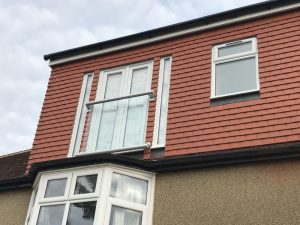
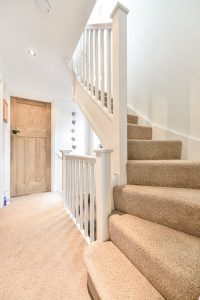
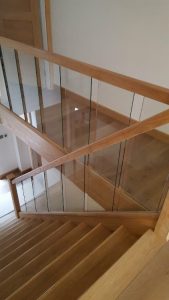
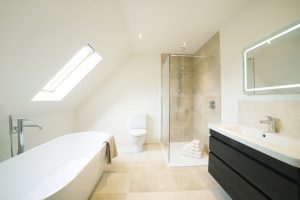
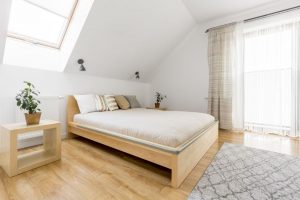
Don’t forget to comply- building regulations, planning permission and party wall
Apart from letting your insurer know that you are getting a loft conversion done, you will also need to ensure the loft conversion has a building regulation certificate. Appointing building control is done by Touchstone Lofts. Building control will register the works with your local council building regulations department. They will check all works, plans and structural engineering and carry out three site visits to check the works.
Most loft conversions do not require planning permission and are “permitted developments.” Touchstone Lofts can do all the planning works for you.
You will need a party wall agreement if you live in a terraced, semi-detached or connected property. Touchstone Lofts will help you with this process every step of the way.
Location of you home
Factors affecting the increase in the value of you home when a loft conversion is completed are discussed above, but the location of your property is also paramount as the table below shows.
| Region | House Price (/sqm) | Value added by loft conversion | Value added by rear extension |
| North East | £1,597 | £38,328 | £23,955 |
| East Midlands | £1,941 | £46,584 | £29,115 |
| Yorkshire and The Humber | £2,049 | £49,176 | £30,735 |
| West Midlands | £2,189 | £52,536 | £32,835 |
| South West | £2,992 | £71,808 | £44,880 |
| East | £3,852 | £92,448 | £57,780 |
| South East | £4,079 | £97,896 | £61,185 |
| Central London | £8,323 | £199,752 | £124,845 |
| Wales | £2,018 | £50,450 | £30,270 |
| England | £4,105 | £102,625 | £61,575 |
| England and Wales | £4,045 | £101,125 | £60,675 |
Source: Resi.co.uk
The South East shows the biggest gains from a loft conversion but the property needs to have good transport links for the biggest gain in value.
The other main factor is the ceiling price on your road or immediate vicinity. If the ceiling price in your road is £450,000 then that’s the limit for your road and breaking through may be difficult. Above all, take whatever your estate agent says with a “pinch of salt”.
If you would like to discuss any of the information in this blog further, we’d be happy to chat with you. Please don’t hesitate to contact us.

